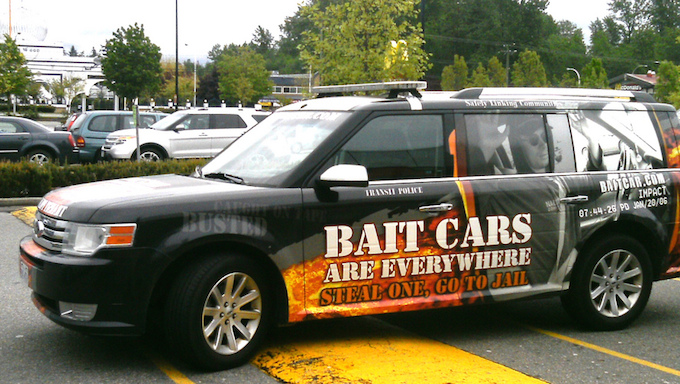
The use of bait cars to find car thieves got some high-profile bad press in 2009, when the practice was exposed as a strange nightmare for an Austin couple who found themselves in legal hot water after a car was parked in front of their house for several days with the windows down and the keys in the ignition.
As reporter Michael May documented in an episode of This American Life, the couple reported the car to Austin Police and found the officer who came to investigate to be less than enthusiastic about addressing the situation. Noticing women’s clothing in the backseat, they decided to rummage around in the car themselves and see if they could find contact information for the owner in the glove box—only to find themselves arrested for breaking into a bait car, planted by police to ensnare thieves who attempted to steal it.
The case of the Austin couple got national attention from This American Life because it seemed especially egregious—the couple hadn’t driven the car, the police refused to investigate when they reported it through proper channels, and it spent days on the street with the keys in the ignition.
But cases like that are outliers. The Dallas Police Department has seen car theft drop 57 percent in the last ten years, according to the Dallas Morning News, a drop police credit primarily to bait cars. “It’s been the key component because the technology is so real-time,” Police Chief David Brown said. The department currently has “about 14 cars” and would like 40 more so that it could station two in each of the 27 areas the department considers “crime hot spot target areas.”
Still, there’s something inherently uncomfortable about police using “bait” to lure people into crimes. Using a different kind of bait has recently been tried in New York, where anti-theft tactics included leaving unattended bags at subway stops, and the arresting people who picked them up.
The This American Life example notwithstanding, though, there’s a substantive difference between leading people to an action that can be easily misinterpreted (maybe the person who picked up the bag planned to turn it in?), and stealing a car. If you get in a car that isn’t yours and start driving it without the owner’s permission, you’re pretty intentionally committing a crime, and a well-maintained program that identifies people who steal cars and tracks them with GPS is a far cry from a police program that treats people who report suspicious incidences as obstacles who are interfering with their operations.
If done properly, bait cars both identify car thieves and discourage car theft generally (as potential thieves don’t know which cars are being tracked by police and which ones aren’t). If Dallas Police increases its capacity, hopefully they’ll do it the right way.







